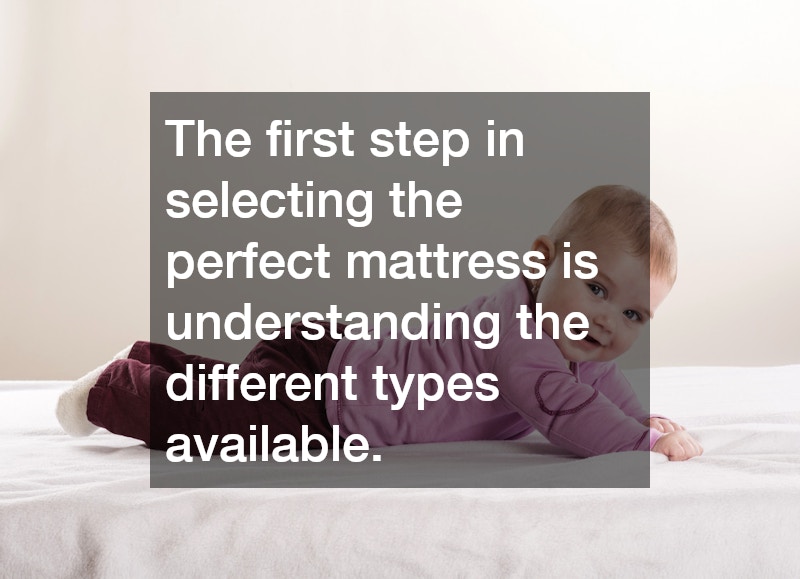
Selecting the perfect mattress is crucial for ensuring a good night’s sleep and supporting your overall health. With many options available on the market, it can be challenging to know which is the best fit for you. This guide will help you navigate the critical factors to consider when choosing the best mattress for circulation and overall comfort.
Understanding Mattress Types
The first step in selecting the perfect mattress is understanding the different types available. The three most common mattress types are innerspring, memory foam, and latex.
Each of these has unique characteristics that can impact your sleep quality and comfort.
Innerspring mattresses are known for their traditional feel and are generally more supportive. They often feature a system of coils that provides good airflow, which can be beneficial for maintaining a steady temperature. However, they may not always be the best mattress for circulation, as their firmness can sometimes restrict blood flow.
Memory foam mattresses are popular for their contouring abilities, which provide excellent pressure relief. They can be particularly beneficial if you suffer from joint pain or arthritis, as they evenly distribute body weight. However, they can retain heat, which might not be ideal for all sleepers.
Consider Your Sleeping Position
Your sleeping position greatly influences the type of mattress that is best suited for you. Side sleepers tend to benefit from a softer mattress that can cushion the shoulders and hips. In contrast, back and stomach sleepers may need a firmer mattress to maintain proper spinal alignment.
If you sleep on your side, a memory foam or latex mattress might be the best choice due to their pressure-relieving properties. These types of mattresses can help improve circulation by reducing pressure on key areas. Conversely, back sleepers might find an innerspring or firm foam mattress better for spine alignment, though it may not always offer the best support for circulation needs.
Ultimately, stomach sleepers should look for mattresses that provide adequate support to prevent sinking and undue stress on the neck and spine. A firm innerspring or hybrid mattress can be suitable options. Regardless of your sleeping position, the best mattress for circulation will ensure your weight is evenly distributed to avoid blood flow restriction.
Assess Mattress Firmness
Firmness is another critical factor to consider, as it affects comfort and support. The right firmness level supports your body while maintaining comfort, without causing pressure points. Firmness is often classified on a scale from soft to extra firm.
Different sleepers have different firmness preferences based on individual needs and conditions. For instance, those who suffer from back pain may require a firmer mattress for better support. Meanwhile, those looking to improve circulation might favor a medium-firm option that provides adequate support while still conforming to the body’s natural curves.
Choosing the ideal firmness is particularly important for preventing certain medical conditions exacerbated by poor circulation. A mattress that is too firm may create pressure, restricting blood flow. In contrast, one that is too soft may not provide enough support, leading to improper spinal alignment and tension.
Evaluate Material Durability and Quality
When selecting a mattress, it’s essential to consider the quality and durability of its materials. A high-quality mattress will provide better long-term support, ensuring consistent comfort and health benefits. Durable materials also contribute to the mattress’s lifespan, making it a more cost-effective choice in the long run.
Memory foam and latex mattresses tend to be more durable, given their density and composition. Latex mattresses, in particular, are known for their resilience and resistance to sagging over time. Investing in a durable mattress can make a significant difference in maintaining proper support and circulation benefits throughout its usage.
Innerspring mattresses, while more affordable, may not last as long due to the potential for coil breakdown. However, high-quality innerspring mattresses with reinforced edge support may offer better longevity. Evaluating material quality helps ensure you select a mattress that meets your health needs, including circulation improvement, over time.
Try It Before You Buy It
Before committing to a purchase, it’s vital to test a mattress whenever possible. Many retailers offer sleep trials that allow you to test a mattress in your own home environment. This experience is invaluable in determining whether a mattress truly enhances comfort and supports your circulation needs.
During a trial period, pay close attention to how the mattress affects your sleep quality and any body aches. Consider how your body responds throughout the night, particularly focusing on areas that could affect circulation. Testing mattresses under real-life conditions helps identify the best mattress for circulation without the pressure of an immediate purchase.
If a sleep trial isn’t available, spend significant time lying on the mattress in-store, simulating your usual sleeping position. This hands-on evaluation helps gauge the mattress’s firmness, comfort, and support. Ultimately, taking the time to test different options ensures you choose a mattress that suits your individual health and comfort needs.
.




